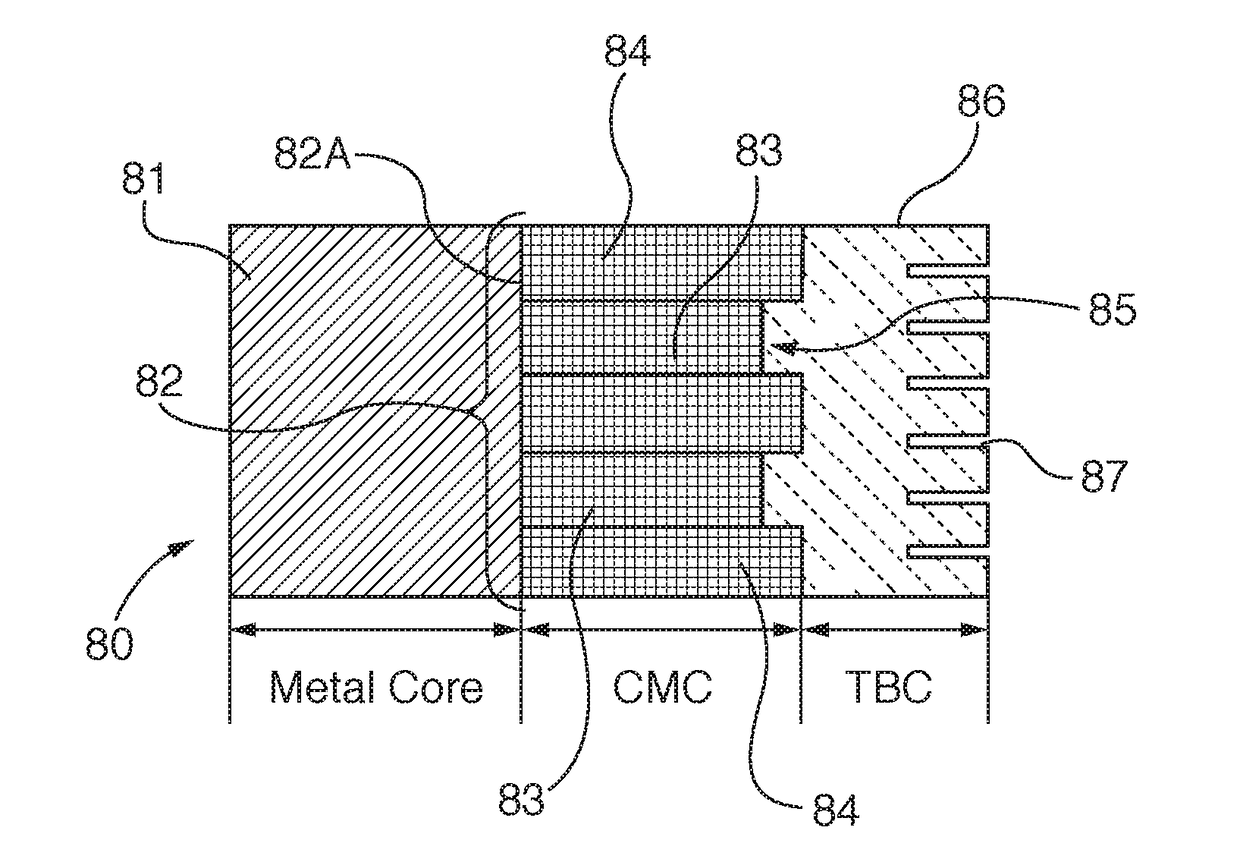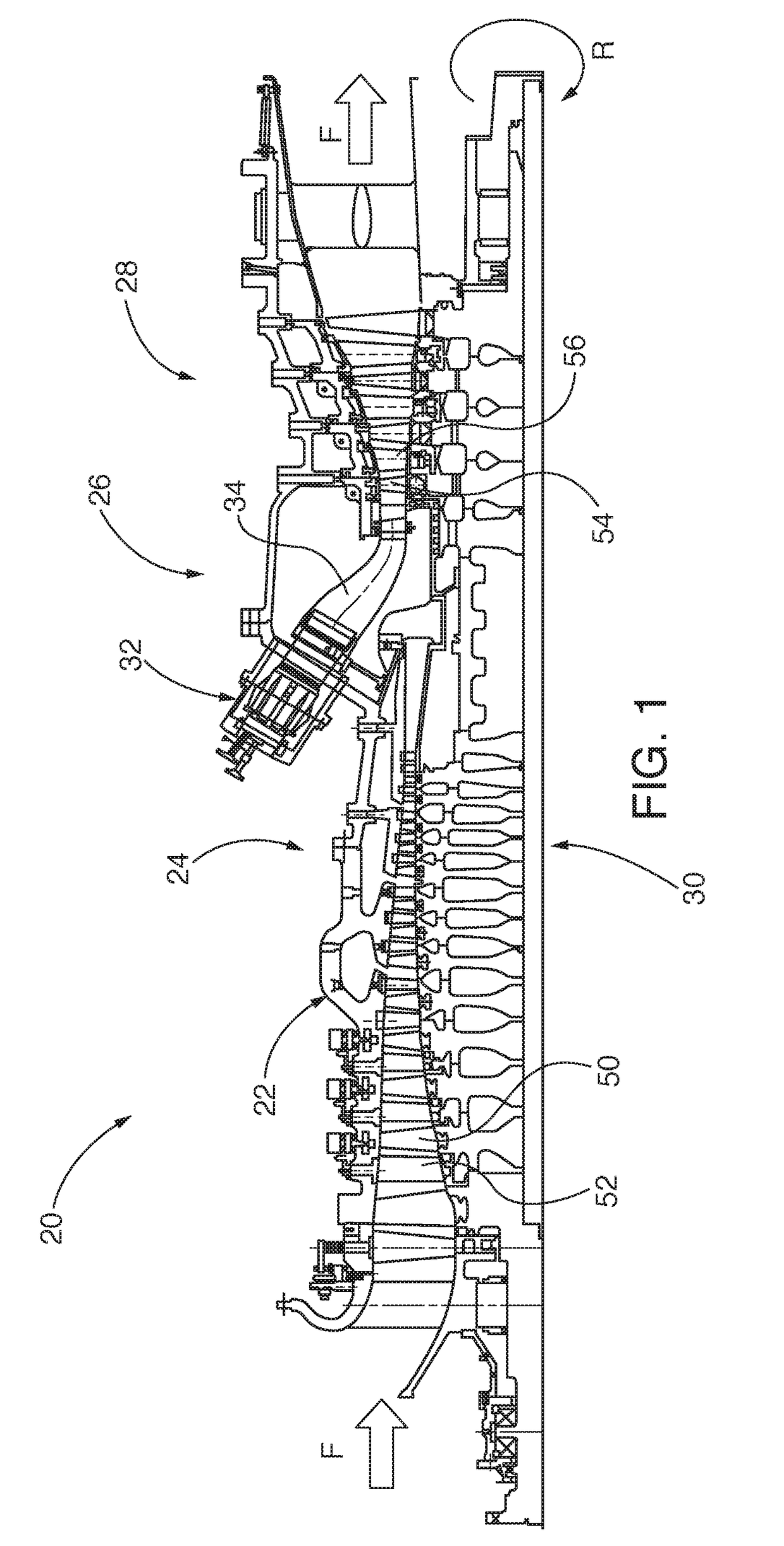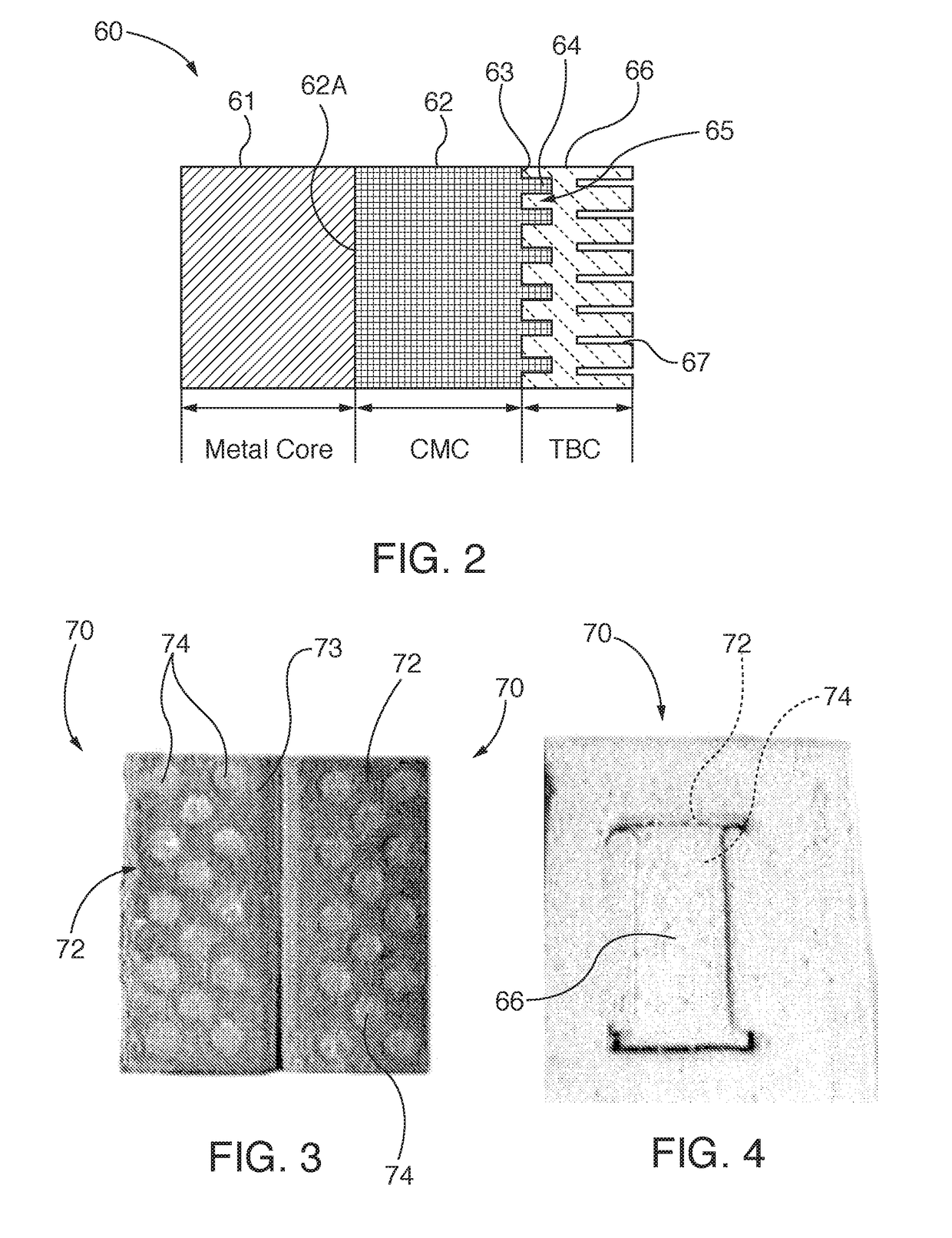Ceramic matrix composite turbine component with engineered surface features retaining a thermal barrier coat
a composite turbine and engineered surface technology, applied in the direction of machines/engines, stators, liquid fuel engines, etc., can solve the problems of crack formation in the tbc layer and its delamination from the superalloy surface, adversely affecting inter-layer adhesion at the cmc/tbc interface, and present new and different thermal expansion mismatch and adhesion challenges, etc., to achieve enhanced tbc retention, increased surface area, and improved adherence ability
- Summary
- Abstract
- Description
- Claims
- Application Information
AI Technical Summary
Benefits of technology
Problems solved by technology
Method used
Image
Examples
Embodiment Construction
[0026]Exemplary embodiments of the invention are utilized in combustion turbine engines. In some embodiments, the ceramic matrix composite (“CMC”) components of the invention are utilized as insulative covers or sleeves for other structural components, such as metallic superalloy components. In other embodiments, the CMC component is structurally self-supporting. Embodiments of the CMC components of the invention are combined to form composite structures, such as turbine blades or vanes, which are structurally self-supporting or which cover other structural elements. Embodiments of the CMC components of the invention have a solidified ceramic core, with a three-dimensional preform of ceramic fibers, embedded therein. Engineered surface features (“ESFs”) cut into an outer surface of the core and fibers of the preform. A thermally sprayed, or vapor deposited, or solution / suspension plasma sprayed thermal barrier coat (“TBC”) is applied over and coupled to the core outer surface and th...
PUM
| Property | Measurement | Unit |
|---|---|---|
| thickness | aaaaa | aaaaa |
| height | aaaaa | aaaaa |
| height | aaaaa | aaaaa |
Abstract
Description
Claims
Application Information
 Login to View More
Login to View More - R&D
- Intellectual Property
- Life Sciences
- Materials
- Tech Scout
- Unparalleled Data Quality
- Higher Quality Content
- 60% Fewer Hallucinations
Browse by: Latest US Patents, China's latest patents, Technical Efficacy Thesaurus, Application Domain, Technology Topic, Popular Technical Reports.
© 2025 PatSnap. All rights reserved.Legal|Privacy policy|Modern Slavery Act Transparency Statement|Sitemap|About US| Contact US: help@patsnap.com



